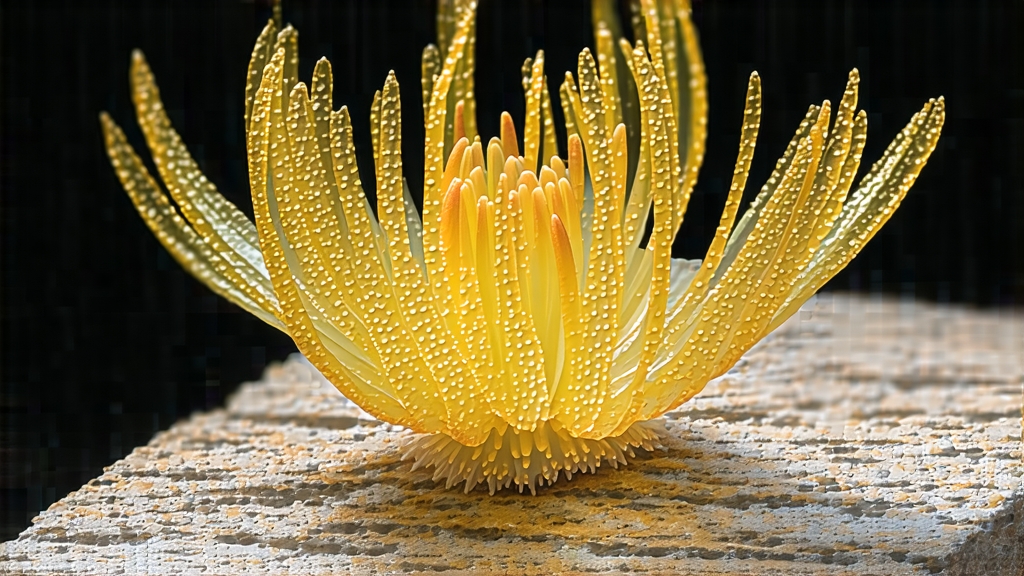
If you have ever wandered through the old markets of Xi’an or the horse-caravan depots that once dotted the Tibetan plateau, you have probably seen them: neat, chocolate-brown bricks wrapped in rough straw paper, stamped with cryptic Chinese characters and smelling faintly of wet earth and dried hay. Those bricks are Fu zhuan cha—literally “Fu brick tea”—a style of dark tea that journeyed westward for more than a thousand years, paid for Tibetan war-horses, nourished Mongolian herders, and, in the twenty-first century, is quietly conquering the cupping tables of Berlin, Melbourne and San Francisco. Unlike the bright, grassy green teas that dominate Instagram feeds, Fu brick is a tea that refuses to be photogenic at first sight; its beauty is hidden inside, in the microscopic golden spores that bloom during a month-long fermentation inside steam-warmed rooms. This essay invites you to look beyond the surface, to understand why a brick that once bought livestock is now auctioned for the price of vintage Burgundy, and to learn how to coax its mellow, jujube-sweet liquor from your own teapot.
-
From imperial frontier to boutique shelf: a 1 300-year timeline
The story begins in the Tang dynasty (618-907 CE) when court decree banned the export of loose tea leaves to the steppe, hoping to control the outflow of silver. Merchants responded by compressing leaf into hard bricks that could survive the 3 000-km trek from Hunan to Kashgar. By the Song period, these bricks had become legal tender; one 1.5 kg Fu brick could trade for one warhorse. The Ming (1368-1644) standardised the weight at 1 kg and required each brick to carry the producer’s name and year, creating the first vintage-dated tea in history. When the Qing opened the Siberian tea road in 1724, Fu brick rode in the saddlebags of Russian caravans all the way to Saint Petersburg, where Tolstoy reportedly drank it sweetened with black cherry jam. After the collapse of the Qing, demand plummeted; only a handful of state factories in Hunan and Shaanxi kept the craft alive. Then, in 2006, French wine merchants discovered that well-aged Fu brick develops the same earthy, truffle-like bouquet as a 30-year Pomerol, and prices quadrupled overnight. Today, top lots from the 1980s fetch more than USD 1 000 per brick at Sotheby’s Hong Kong. -
What exactly is a Fu brick?
Chinese dark tea (heicha) is an umbrella category covering any tea that undergoes post-fermentation—microbial activity that continues after the leaves are dried. Within heicha, Fu brick is unique because it is inoculated with Eurotium cristatum, a harmless fungus that produces golden yellow spores nicknamed “golden flowers” (jin hua). The fungus is not added artificially; instead, the factory manipulates temperature and humidity so that the spores already resident on Hunanese maocha proliferate until the brick looks dusted with powdered saffron. A legal minimum of 50 000 colony-forming units per gram is required before the tea can be sold as authentic Fu brick; premium lots exceed 500 000. -
Micro-terroirs: three provinces, three styles
Although the name “Fu” derives from the old postal station of Jingyang in Shaanxi, 95 % of today’s production occurs further south in Hunan, with smaller, stylistically distinct outposts in Hubei and Sichuan.- Hunan Fu brick: Made from the large-leaf cultivar Yun-da zhong grown at 800–1 200 m in the Xuefeng mountains. The leaf is naturally high in polysaccharides, giving a thick, soy-milk-like texture and notes of honeydew melon and cocoa.
- Shaanxi Fu brick: Uses smaller-leaf material from the Qinling range. Shorter pile fermentation yields a lighter cup with a pronounced dried-apricot aroma and a clean, peppery finish.
- Sichuan Fu brick: Produced in Ya’an, the starting point of the Tea-Horse Road. The leaf is smoked for two hours over pine embers before bricking, adding a subtle resinous layer that complements the fungal earthiness.
-
Crafting a brick: a 60